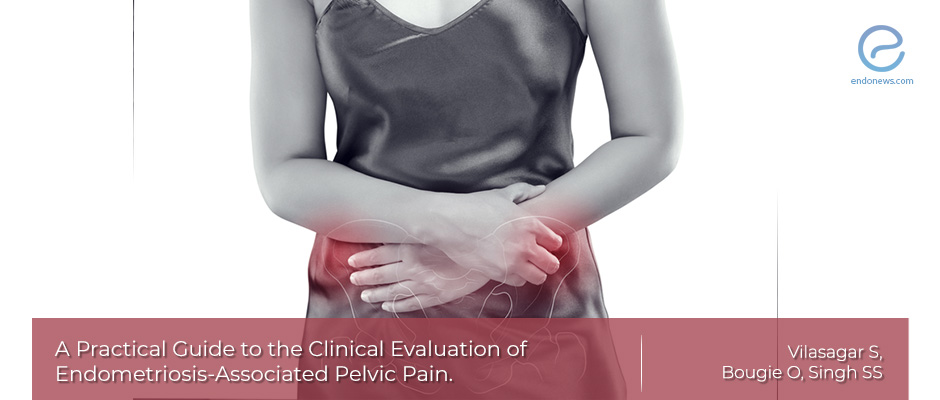Clinical Evaluation of Endometriosis-Associated Pain
Mar 16, 2020
A checklist for the early diagnosis of endometriosis
Key Points
Highlights:
- Endometriosis-associated pain negatively affects the life of patients, early diagnosis and starting the treatment as soon as possible is crucial.
- Current key components for the assessment are physical examination, history, and high-quality imaging.
- Although there are no powerful biomarkers to be used at diagnosis, there is ongoing research and effort to develop noninvasive tests to achieve early detection.
Importance:
- The study provides a useful guideline to physicians for the evaluation of endometriosis-associated pain.
What’s done here?
- The authors reviewed the history of patients and the imaging techniques used to evaluate their complaints.
- They then provided a comprehensive checklist for the clinicians to establish a practical and reliable approach for the diagnosis of Endometriosis-associated pain.
Key results:
- The study points the importance of careful evaluation and examination with the consideration of patients’ history to have a correct diagnosis.
- The study emphasizes the importance of being systematic and of including patient-directed concerns during evaluation.
- The study underlines the importance of improving the knowledge and use of advanced imaging techniques to achieve the correct diagnosis.
- There are no specific biomarkers for endometriosis and blood test are not more informative than history, physical examination, and advanced imaging techniques.
Lay Summary
Endometriosis has a noteworthy impact on the quality of life of the patients diagnosed with it since it is associated with unpleasant conditions such as endometriosis-associated pain.
The diagnosis of endometriosis is not always straightforward because of the varying symptoms and a wide range of clinical manifestations. Median delay for the diagnosis can be as late as 10 years and the delay in diagnosis was found to be longer for women who have pelvic pain compared to women who have infertility. There is an urgent need to achieve early diagnosis in women with such complaints to provide timely management of the symptoms and improve quality of life.
A systemic assessment of history, physical examination and high-quality imaging may help to achieve an early diagnosis of endometriosis. This study, authored by Vilasagar et al. and published in the Journal of Minimally Invasive Gynecology, aims to provide the clinicians with a guideline that might be a useful tool to evaluate endometriosis-associated pain.
The authors emphasize the lack of reliable diagnostic biomarkers that are specific to endometriosis but they provide clinicians with a practical checklist that was composed after reviewing several cases, symptoms associated with endometriosis and the results of advanced imaging techniques. The checklist may help clinicians to recognize the specific type of pains that might be associated with endometriosis and may help them to choose the right imaging technique to complete the diagnosis.
The authors also underscore that the systemic evaluation, which includes the careful assessment of the history of the patient, patient-directed complaints and use of high-quality imaging techniques are crucial to recognize "Endometriosis Associated Pain" and to make an early diagnosis for endometriosis.
Research Source: https://www.ncbi.nlm.nih.gov/pubmed/31669551
endometriosis endometriosis-associated pain early diagnosis

